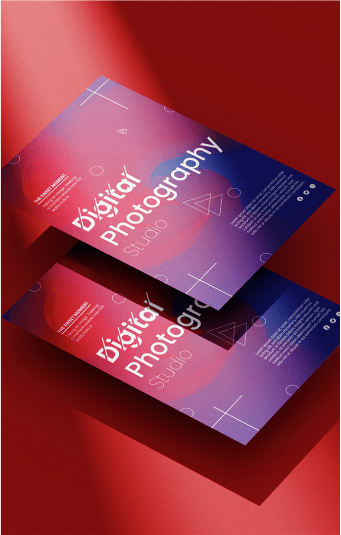Are you intrigued by the prospect of natural language generation? If so, then you have probably heard about ChatGPT-4, the latest transition in open-source language models. With more and more research being conducted into advanced natural language processing (NLP) capabilities, GPT-4 is now one of the gold standards for developing AI applications. But did you know there’s plenty that goes behind it? In this blog post, we will go through some fascinating facts about what really makes GPT-4 tick; from how it works under the hood to new developments on using it for projects like summarization and dialog systems – discover everything you need to know about GPT here!
-
A Brief Overview of ChatGPT-4 and What it Can Do
GPT-4 (Generative Pre-trained Transformer 4) is a major advancement in natural language processing. It operates on the principle of ‘Teaching Machines to Read and Comprehend’, which essentially allows computers to understand language similar to how humans do. This AI system is able to generate text that mimics human writing style using just a few words as input. GPT-4 has many potential applications ranging from chatbots and content creation in various languages all the way to automated translations and text summarization. Moreover, it can also be used for sentiment analysis, generates questions automatically from new articles, or completes partial storylines in fiction with its powerful language capabilities. Overall, GPT-4 has the potential to revolutionize the way we work and communicate by making tasks easier and more efficient for us.
-
The Different Types of ChatGPT-4 Models Available and Their Uses
GPT-4 (Generative Pre-trained Transformer) models are the latest form of artificial intelligence that combines natural language processing and machine learning to generate written text. Popular uses of GPT-4 models include summarizing, creating stories, and generating text with a specific style. The most common types of GPT-4 models available include OpenAI’s GPT, Google’s BERT, Microsoft’s XLNet, and HuggingFace’s Transformer Library. All have their unique strengths; for example, OpenAI’s GPT has a larger model size and Google’s BERT has stronger inference capabilities than other models. While each model is beneficial in its own way depending on the needs of the user, for those just starting out who don’t need all the specialized features specific to certain models, the Huggingface Transformer Library is an especially advantageous starter-level model.
-
How ChatGPT-4 is Used for Language Generation and Understanding
GPT-4 is an artificial intelligence language model developed by OpenAI, a leading research lab in San Francisco dedicated to creating and delivering human-level ground-breaking AI technology. Like its predecessors GPT-3 and GPT-2, GPT-4 has developed a strong capability to generate natural language on its own. And while earlier models focused solely on text generation, this latest version of Open AI’s transformer technology can also be used for natural language understanding tasks like translation and summarization. The artificial intelligence model is significantly faster and more accurate than previous versions and requires less training data for improved results. With the help of powerful GPUs, it can generate sentences which are grammatically correct, and impressively close to human-quality writing. For many the ability of GPT-4’s natural language generation capabilities has been especially interesting for content creation, making it an ideal tool for writers wanting to boost their productivity.
-
The Challenges with Training a ChatGPT-4 Model and Potential Solutions
Training a GPT-4 model is no simple feat. Its sheer size makes the entire task a complicated endeavor that’s difficult to master. For starters, GPT-4 models must be accompanied by massive training sets that can cover different contexts and topics. To ensure its ability to generate quality outputs, this model also needs numerous layers with the right neurons, which complicates the process further. Additionally, proper preprocessing of data is necessary – a task that takes ample time and resources to execute. Finally, due to the complexity of GPT-4 models, they require large volumes of power and memory resources for successful training – both of which may be expensive or hard to find in some cases. Fortunately, there are ways to overcome some of these challenges. Structured data and smaller versions of the GPT-4 model can alleviate the struggle associated with training it since they’re easy to work with and come with lower computing requirements. Other tools such as HuggingFace provide alternative solutions for those who don’t have direct access to powerful GPUs or high volumes of computing power. Ultimately, although extensive resources are needed for ChatGPT-4 training, numerous tools and approaches exist nowadays that make it easier than ever before.
-
Tips for Getting the Most Out of Your GPT-4 Model
Using a Generative Pre-trained Transformer 4 (GPT-4) model can lead to improved results when compared to other machine learning models. To ensure you get the most out of GPT-4, there are several tips to bear in mind during implementation. When feeding a sentence into the model, ensure that the sentence is formatted correctly and capitalized where necessary; this will help the model understand it more quickly. You should also create training samples to help direct its learning – for example, if you want it to generate better images or text, provide it with many examples to work with. Additionally, make sure to leave time for the model to ‘warm up’; initially it may make mistakes as it gets used to the data, so be patient and wait until later iterations show improvement. Finally, consider using smaller pre-trained models as they offer more complexity while conserving resources. All these tips will help ensure that your GPT-4 model delivers maximum performance.
-
How GPT-4 is Being Used in Real-Life Applications Today
GPT-4 is a powerful deep-learning language processing system that has been gaining significant attention recently, and for good reason. This language model uses a neural network to generate natural-sounding text. It is already being used in real-life applications today, such as automating customer service, translating written documents and blog posts, developing creative stories, and creating summaries of text long documents. For example, AI startups are using ChatGPT-4 to produce content faster and easier than manual writing. The language model can analyze large texts and produce summaries at a much faster rate than an individual writer ever could. All in all, GPT-4 is yet another example of how machine learning can be used to simplify our everyday tasks and make them more efficient and accurate.
Conclusion
Overall, GPT-4 has shown great potential and could be a ball of progress for the artificial intelligence industry. Its capabilities are still being explored and new applications are being discovered every day. Despite some training obstacles, ChatGPT-4 is well worth getting to know if you’re looking for any way to expand AI technology or your own understanding of language comprehension and generation. Whether you’re interested in robotics, scientific research, programming, or even creative writing, GPT-4 could provide some helpful insight. Its versatile capabilities make it an ideal tool to use in many contexts. With all these in mind, one thing is clear – GPT-4 gives us a glimpse of what can be achieved with the right tools and knowledge!





